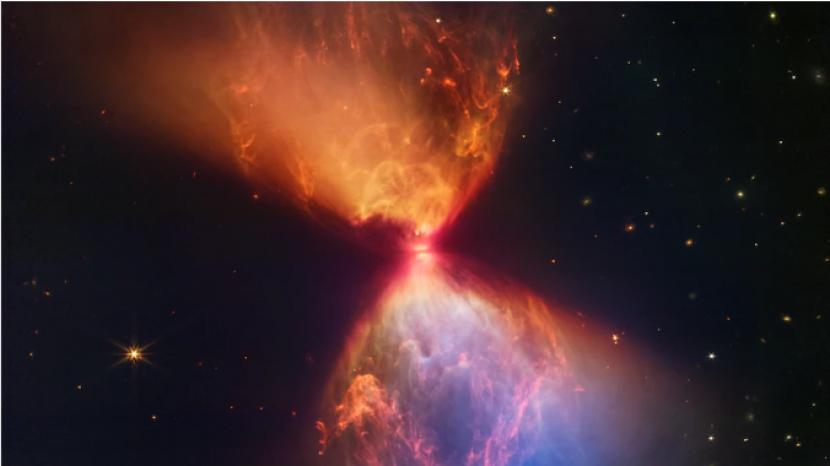The new photos use infrared light to reveal the protostar’s features.
REPUBLIC.CO.ID, WASHINGTON – The James Webb Telescope (JWST) has unveiled a photo that looks like a burning hourglass. This photo sheds light on what our Sun and solar system look like “in their infancy.”
The new photo uses infrared light to reveal features of the ‘protostar’ that were once hidden. According to the US Space Agency (NAS), this photo provides information about the beginnings of new stars. The protostar is in dark clouds, L1527, hidden from view within an hourglass-shaped “neck”.
“The proto-planetary disk is visible as a dark streak down the center of the neck,” NASA said in a statement. ABC News, Thursday (17/11/2022).
“Light from protobintang it spews above and below this disk, illuminating cavities in the surrounding gas and dust.
The blue and orange clouds that form each side of the hourglass are caused by material ejected from the protostar and colliding with matter. At its center, the disk is about the size of our solar system. The color is created by a layer of dust between the telescope and the clouds. The thicker the dust, the less blue light there will be, creating those orange pockets.
NASA added that the protostar is “relatively young,” just 100,000 years old. “Given its age and luminosity in far-infrared light, as observed by missions such as the Infrared Astronomy Satellite, L1527 is considered a Class 0 protostar, an early stage in star formation,” NASA said.
NASA said protostars like this one are still trapped in a dark cloud of dust and gas and still have a long way to go before becoming full-fledged stars. L1527 did not generate its own energy via hydrogen nuclear fusion, which is an important feature of stars.
“Its shape, while mostly spherical, is also unstable, taking the form of small blobs of hot, swollen gas, between 20 and 40 percent of the mass of our Sun.”
As the protostar continues to accumulate mass, its core will gradually condense and move closer to stable nuclear fusion. “The scene shown in this image is revealing L1527 do just that,” NASA said.
NASA says the molecular cloud around it is made up of dense dust and gas drifted into the center, where the protostar lives. As the material falls, it rotates around the center.
“This creates a dense disk of material, known as an accretion disk, which feeds matter into the protostar. Ultimately, this view of L1527 provides a picture of what the Sun and our solar system looked like when they were babies,” she said.


